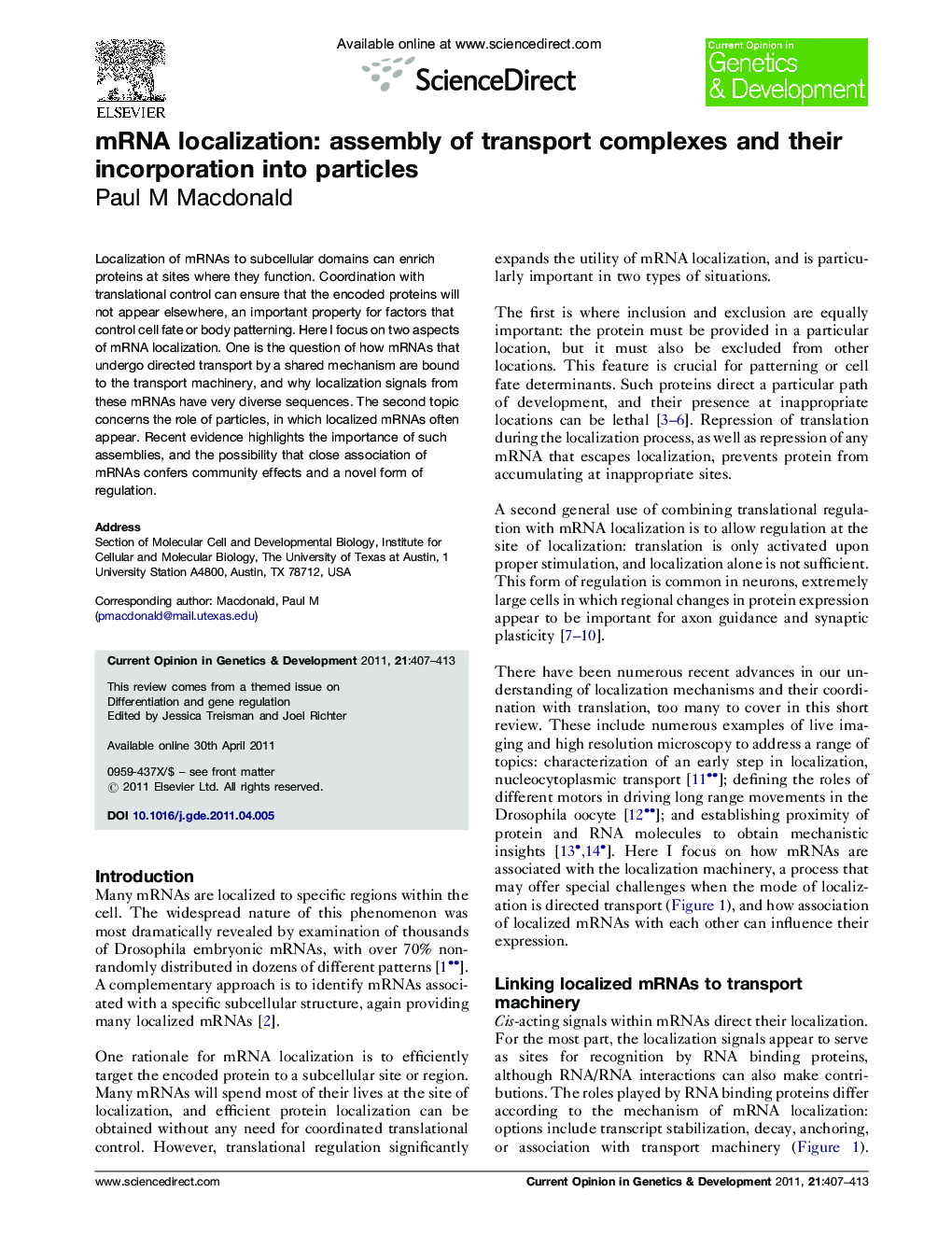| Article ID | Journal | Published Year | Pages | File Type |
|---|---|---|---|---|
| 2784973 | Current Opinion in Genetics & Development | 2011 | 7 Pages |
Localization of mRNAs to subcellular domains can enrich proteins at sites where they function. Coordination with translational control can ensure that the encoded proteins will not appear elsewhere, an important property for factors that control cell fate or body patterning. Here I focus on two aspects of mRNA localization. One is the question of how mRNAs that undergo directed transport by a shared mechanism are bound to the transport machinery, and why localization signals from these mRNAs have very diverse sequences. The second topic concerns the role of particles, in which localized mRNAs often appear. Recent evidence highlights the importance of such assemblies, and the possibility that close association of mRNAs confers community effects and a novel form of regulation.
► Egl is the elusive factor for recognition of the TLS mRNA localization signal. ► The TLS structure consists of two A′ form RNA double helices. ► PTB regulates oskar mRNA and directs its assembly into large particles. ► oskar mRNA is regulated in trans, which may be facilitated by assembly in particles.
